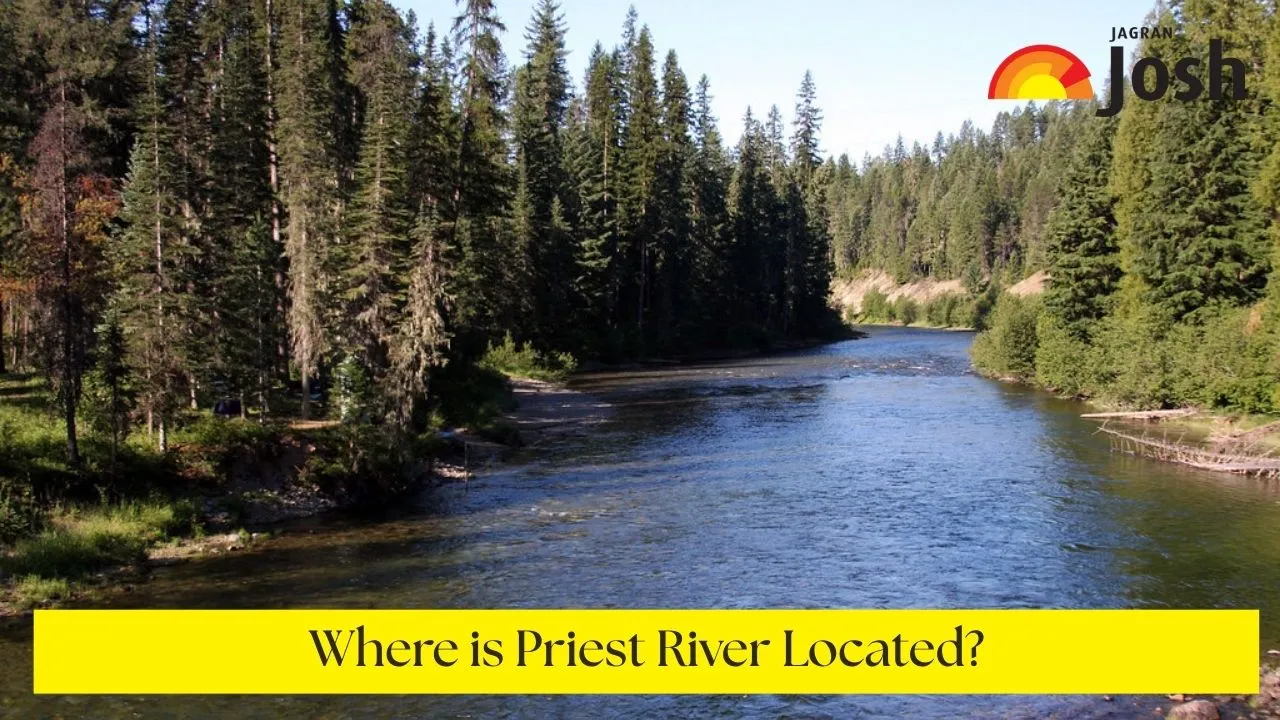Priest River is located in the picturesque Idaho Panhandle. The city was incorporated in 1903 with a population of just over 1,700 residents as of recent U.S. Census Bureau data. This city is far more than just a dot on the map. The town has strong ties to both the history of its early timber industry and the exploration of the pristine waters that gave rise to its very name. The location of Priest River, its history, and its special significance will all be covered in detail in this article.
Check Out: Lake Placid: Where is It Located? Check History & Significance
Where is Priest River located?
Priest River is located in Bonner County, northwestern Idaho. It sits strategically at the confluence of two important waterways: the Priest River and the Pend Oreille River. It is situated approximately one hour's drive north of Spokane, Washington, and southwest of the county seat of Sandpoint, Idaho. The town is surrounded by the Kaniksu and Coeur d'Alene National Forests in the locality of Priest Lake and Upper Priest Lake. These forests facilitate access to breathtaking mountain and water regions. Also, a main road called U.S. Route 2 goes right through the city, making it easy to travel east and west.
What is the history of Priest River, Idaho?
The area now known as Priest River was originally inhabited by the Kalispel Indians. European exploration began in the 1840s when Jesuit priest Pierre-Jean de Smet traversed the region. Both the Priest River and Priest Lake were named in reference to him, acknowledging his early presence. The town of De Smet on the Coeur d'Alene Indian Reservation, further south, also bears his name.
-
The village of Priest River itself was first settled in 1889. Its significant development began shortly after the railroad reached the area in 1891, linking it to broader transportation networks.
-
The logging industry has been the economic mainstay of the community, with the first sawmill built in 1897. Loggers would famously drive timber down the Priest River from Priest Lake with the spring runoff to the mills in town, a practice celebrated at the annual Timber Days festival.
-
Beyond logging, mining, agriculture, and more recently, tourism have also played vital roles in the town's economic evolution. The Priest River Museum and Timber Education Centre further preserve this rich industrial past.
What is the Priest River Known For?
Priest River is primarily known for its strong connection to outdoor recreation. It serves as the primary gateway to the pristine Priest Lake and Upper Priest Lake. Moreover, it is an exceptional destination for many recreational activities like fishing, boating, and camping. Read more about why it's so famous:
-
Gateway to Outdoor Recreation: It serves as the main access point to Priest Lake and Upper Priest Lake, renowned for their pristine waters, fishing, boating, and camping. It's surrounded by national forests offering extensive hiking, biking, and winter sports opportunities.
-
Timber Heritage: Its historical roots as a logging and sawmill town are central to its identity.
-
World-Class Fishing: Priest Lake, accessible from the river, is particularly famous for its giant-sized trout, including Mackinaw (Lake Trout) and Dolly Varden.
-
Confluence of Rivers: The meeting point of the Priest River and Pend Oreille River is a key geographical feature.
Check Out:Which State is Washington D.C in and How Did it Become the Capital of the U.S.?
Can You Swim in the Priest River?
Yes, you can swim in the Priest River. The river offers excellent opportunities for swimming, wading, and other water activities like kayaking and canoeing. There are specific spots, such as Dickensheet Campground, located along the river below Priest Lake's outlet, which feature pebbly shores and designated swimming areas, making them popular for families.
How deep is the Priest River in Idaho?
The depth of the Priest River varies along its course. The section connecting Priest Lake to Upper Priest Lake, known as the Thorofare (about 2 miles long), is generally 5-10 feet deep. However, at its outlet into Priest Lake, the Thorofare can be as shallow as 3 feet deep at summer pool level. The main Priest Lake itself, to the north, is much deeper, with a maximum depth of 369 feet. The river's depth within the town of Priest River would depend on specific locations and seasonal flows.
Priest River, Idaho, remains a community deeply connected to its natural environment and rich industrial heritage. Its strategic location and abundant outdoor offerings continue to make it a significant, albeit small, hub in the Idaho Panhandle.

Comments
All Comments (0)
Join the conversation